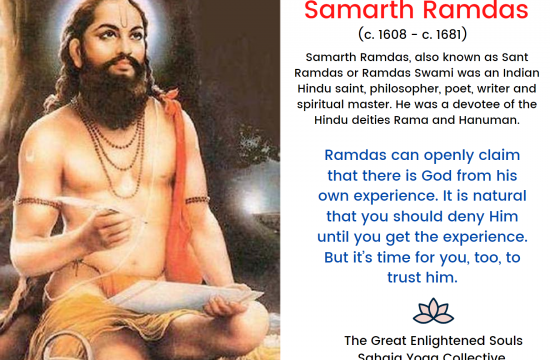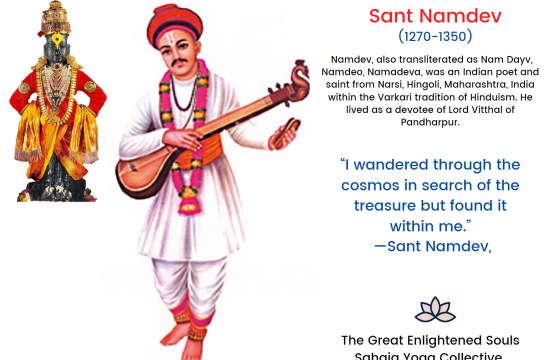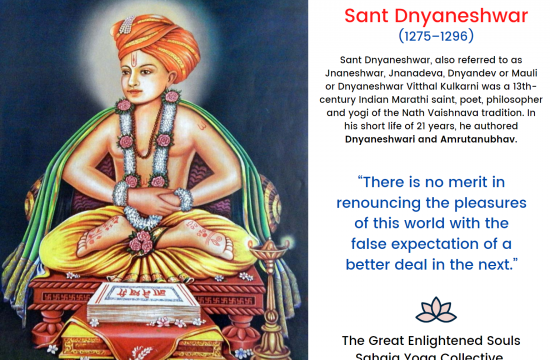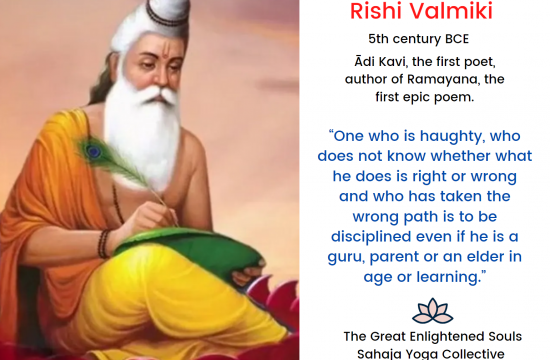Saptarishi are the seven greatest sages of the Vedic realm. They have attained a semi-immortal status, that of an exceedingly long lifespan due to their yogic power and by the power of their penance.
The seven holy sages were assigned to be present through the four great ages to guide the human race. These seven sages, or Sapta Rishis, worked closely with Lord Shiva to maintain the balance on Earth.
They are the seven mind-born sons of Lord Brahma who live for a period of time known as a manvantara (306,720,000 Earth Years). They serve as representatives of Brahma during this period of time, and at the end of a manvantara, the universe gets destroyed. Saptarishi merges in God, and the task of filling the Earth is given to the newly appointed Saptarishi.
All the Saptarishi are Brahmarishis which means they have completely understood the meaning of Brahman. Usually, one cannot rise to the level of a Brahmarishi through merit alone since the order was created divinely and is appointed by Lord Brahma. However, Vishwamitra rose to the position of a Brahmarishi through his own merit alone. He performed meditation and austerities (Tapasya) for tens of thousands of years, and as a result, he was awarded the rank of Brahmarishi from Bramha himself.
Brahmarishis are so powerful that they can defeat every weapon on earth, can forecast the future, and are not influenced by the circle of life and death. Saptarishis are greater even than the devtas in power, and diety are the highest in rank over Devatas and other classifications of Rishis such as Rajarishi and Maharishi.
Maharishi means ‘great sage’ in Sanskrit and refers to one who has greatly expanded and refined senses. Their third eye is completely open, and their intuition is used to its fullest capacity. Their attention and focus encompass the entire universe, yet they can still maintain incredibly precise detail in actions and thoughts.
Rajarishi means ‘royal sage’ in Sanskrit. It refers to one who is a king or a prince as well as a sage. A Rajarishi can leave the kingship and become a Rishi such as Vishwamitra.
Names of Saptarishi – Seven Great Sages
The Saptarshi of the current Manvantara, according to Brihadaranyaka Upanishad, are listed below in this article. Brihadaranyaka Upanishad is one of the earliest Upanishadic Hindu scriptures.
Bharadwaja

He is one of the greatest sages in Vedic times and also a descendant of sage Angirasa. His father is Devarsi Brihaspati. Sage Bharadwaja is the Author of Ayurveda. He is the father of Guru Dronacharya, and his ashrama still exists in Allahabad. He was also a master of advanced military arts, including the Devastras. His wife is Suseela, with whom he had a daughter named Devavarnini and son Garga.
Dronacharya (Guru of Pandavas and Kauravas) was born as a result of his attraction to Apsara.
According to some of the Puranas, Bharadvaja was found on the banks of river Ganga and adopted by king Bharata. He had an unquenchable thirst for knowledge of Vedas and, in addition, meditated for Indra, Lord Shiva, and Parvathi for more Vedic Knowledge.
Vishwamitra

Rishi Vishwamitra is one of the most well-known Sapatarishi and the great sages who discovered the Gayatri Mantra, found in the Vedas. Usually, one cannot rise to the level of a Brahmarishi through merit alone since the order was created divinely and is appointed by Lord Brahma. However, Vishvamitra rose to the position of a Brahmarishi through his own merit alone.
His epic tussle with Vasistha for the position of the greatest sage of all time makes a very interesting story. He was not a Brahmana by birth but a Kshatriya (warrior). Having fought, lost, and then pardoned by the Sage Vasista, it made a deep impression on the King. He realized that the power obtained by penances was greater than mere physical might. He renounced his kingdom and began his quest to become a greater sage than Vasishtha. He took on the name Vishvamitra.
After many trials and undergoing many austerities for thousands of years, Vishwamitra at last obtained the title of Brahmarishi from Bramha and Vasishtha himself.
Vasishtha
Rishi Vasishtha is one of the Saptarishi of this Manvantara and the husband of Arundathi. He is the mind-born son of Lord Brahma and the Raja-guru of the Surya Vamsha or the Solar dynasty. He is the author of Vasistha Samhita, a treatise on electional astrology. He and his family are glorified in a hymn in the Rig Veda.
Lord Rama once explains his disenchantment with worldly things. He expresses sadness at the miserable life as a worldly man to King Dasaratha after returning from a pilgrimage of holy places. Then the Sage Vasishtha starts answering the questions posed by Lord Rama. This is the context and content of the scripture called “Yoga Vasistha.”
Gautama

Gautama Rishi belongs to the lineage of Angiras. His sons were Vamadeva, Nodhas, Shatananda and were one of the earliest writers on Law. He also authored the Gautama Dharma Sutra and The Rig & Sama Vedic mantras.
His wife was Ahalya, who was the daughter of Lord Brahma. At the appropriate time, the Lord announced that whosoever goes around the Earth first shall win Ahalya’s hand. Gautama Rishi went around the divine cow, thus fulfilling the condition. Ahalya and Gautama Rishi were married.
Gautama Rishi was a person without an ego. When the people of the land suffered a draught, the Maharishi set out to meditate upon Lord Varuna. Pleased with his single-mindedness, Lord Varuna appeared. The Rishi asked Varuna for rain. Lord Varuna explained, “The Law demands that there should not be rain in the place for this period of time. I cannot go against the Law since Lord Shiva governs all five forces. Ask me anything else.” Maharishi immediately requested an incessant supply of water in the reservoir. Thus Gautama Rishi saved many people.
Atri

Sage Atri is one of the Saptarishi in the current Manvantara and a son of Brahma. He is one among the Sages who propounded the sacred thread (Poonal). Sage Atri’s wife is Anusuya, an embodiment of chastity. He is considered to be one of the great discoverers of sacred mantras. Atri Samhita and Atri Smriti are two works of the great sage.
Anasuya is known for chastity. One day Trimurty decided to test and arrives at her home as Brahmins. They ask her to serve food naked. She agrees and converts them into kids. Surprised by the power of her chastity, trinity gods showed up in their original form; she becomes their mother. Anasuya gave birth to Lord Dattatreya as an avatar of Trinity – Brahma, Vishnu, and Shiva.
Kashyapa

Kashyapa Rishi is one of the most popular ancient Rishi and Saptarishi. He is the son of Rishi Marichi and the grandson of Brahma. He was the father of Devas, Asuras, Nagas, garudas, Vamana, Agni, Adityas, Daityas, Aryaman, Mitra, Pusan, Varuna, and all Humanity. He is the progenitor, Prajapati. He was an author of Kashyapa Samhitha, a classical reference book in Ayurvedic Paediatrics, Gynecology, and Obstetrics.
In the story of King Parikshith killed by Serpent Takshaka, Kashyapa arrives to stop it when Takshaka challenges him by biting a tree and turning it into ashes. Kashyapa restores the tree with his yogic powers and defeats the serpent. However, it explains the curse of Brahmin Boy and tells that consequences have to be faced. Sage, understanding the future of King, leaves the place, taking offerings from Takshaka. Soon he realizes that what is done is not correct and visits Tirupathi to get rid of sin.
Jamadagni

Jamadagni is the father of Parashurama, the sixth avatar of Vishnu. Also, the descendant of sage Bhrigu, one of the Prajapatis created by Brahma. His wife was Renuka, who used to fetch water from the river in an unbaked clay pot with the power of her chastity. One day her heart was filled with desire when a group of Gandharvas is passing in the sky. The pot dissolved. She being afraid of her husband, doesn’t come home. Jamadagni knowing this from his yogic powers asks Parashurama to kill his mother, which he did.
Our ancestral lineage, Gotras, relates directly to the Saptarishi. A Gotra is a lineage or clan assigned to a Hindu at birth. In most cases, the system is paternal, and the Gotra assigned is that of the person’s father. According to strict Hindu tradition, the term Gotra itself is used only for the lineages of Brahmin, Kshatriya, and Vysya families. Hence, the child is given a particular Gotra to the particular clan of Saptarishi they belong to.
Source- https://vedicfeed.com/saptarishi-and-their-contributions/










